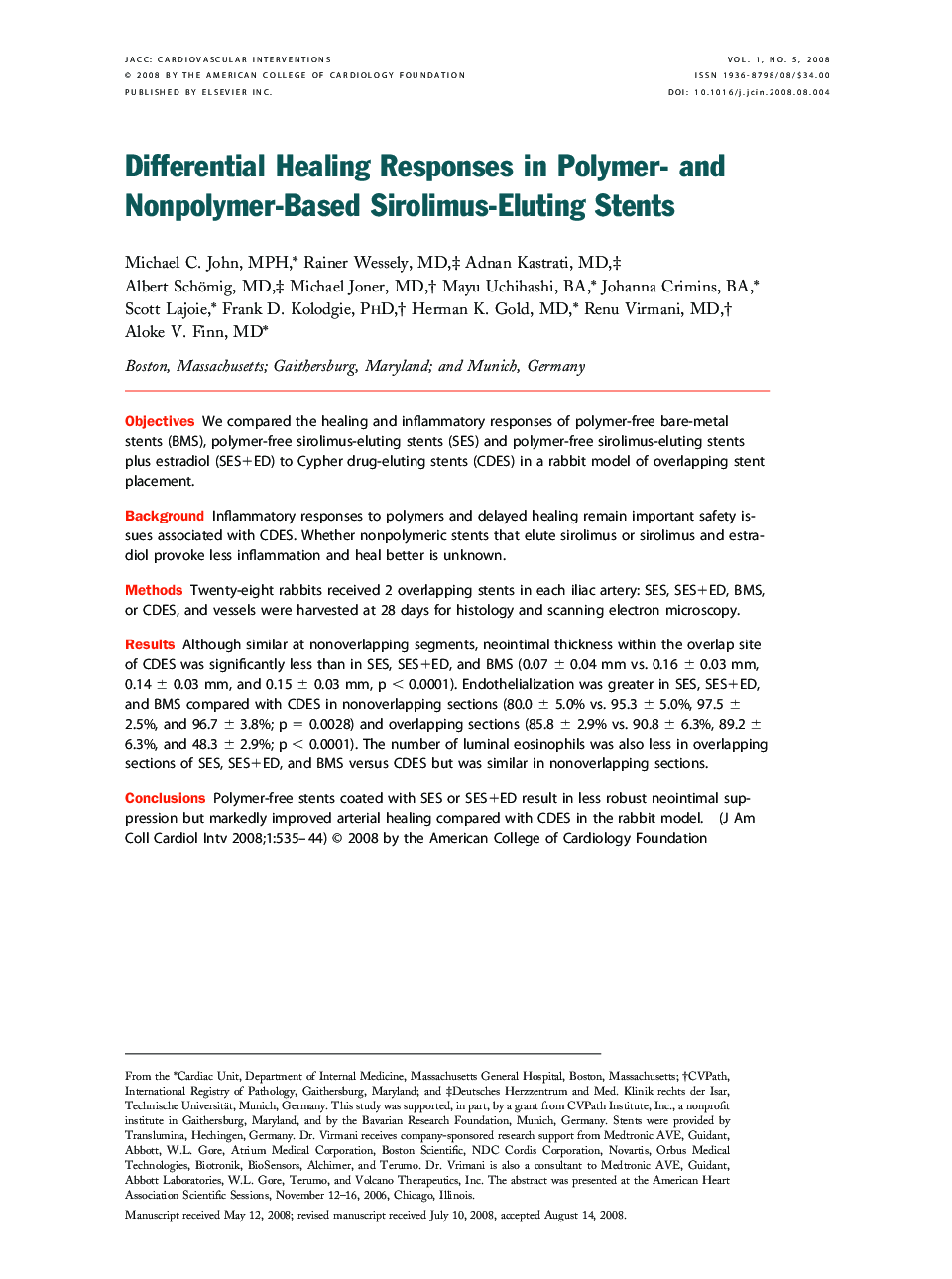| Article ID | Journal | Published Year | Pages | File Type |
|---|---|---|---|---|
| 2941767 | JACC: Cardiovascular Interventions | 2008 | 10 Pages |
ObjectivesWe compared the healing and inflammatory responses of polymer-free bare-metal stents (BMS), polymer-free sirolimus-eluting stents (SES) and polymer-free sirolimus-eluting stents plus estradiol (SES+ED) to Cypher drug-eluting stents (CDES) in a rabbit model of overlapping stent placement.BackgroundInflammatory responses to polymers and delayed healing remain important safety issues associated with CDES. Whether nonpolymeric stents that elute sirolimus or sirolimus and estradiol provoke less inflammation and heal better is unknown.MethodsTwenty-eight rabbits received 2 overlapping stents in each iliac artery: SES, SES+ED, BMS, or CDES, and vessels were harvested at 28 days for histology and scanning electron microscopy.ResultsAlthough similar at nonoverlapping segments, neointimal thickness within the overlap site of CDES was significantly less than in SES, SES+ED, and BMS (0.07 ± 0.04 mm vs. 0.16 ± 0.03 mm, 0.14 ± 0.03 mm, and 0.15 ± 0.03 mm, p < 0.0001). Endothelialization was greater in SES, SES+ED, and BMS compared with CDES in nonoverlapping sections (80.0 ± 5.0% vs. 95.3 ± 5.0%, 97.5 ± 2.5%, and 96.7 ± 3.8%; p = 0.0028) and overlapping sections (85.8 ± 2.9% vs. 90.8 ± 6.3%, 89.2 ± 6.3%, and 48.3 ± 2.9%; p < 0.0001). The number of luminal eosinophils was also less in overlapping sections of SES, SES+ED, and BMS versus CDES but was similar in nonoverlapping sections.ConclusionsPolymer-free stents coated with SES or SES+ED result in less robust neointimal suppression but markedly improved arterial healing compared with CDES in the rabbit model.
